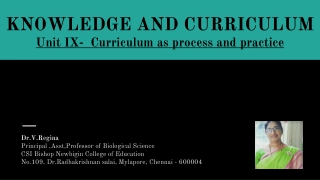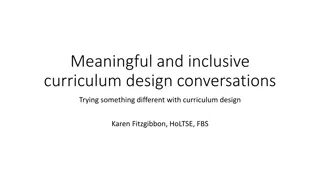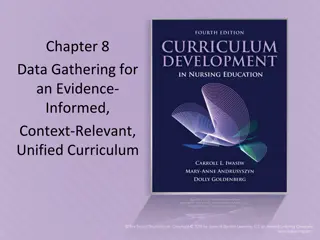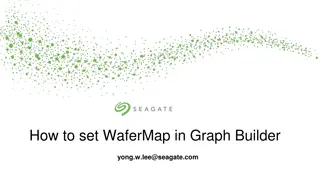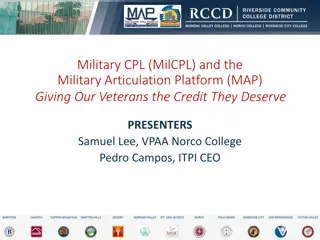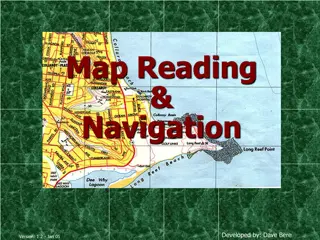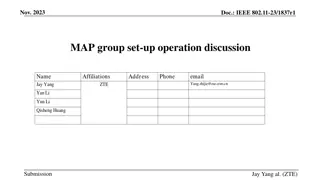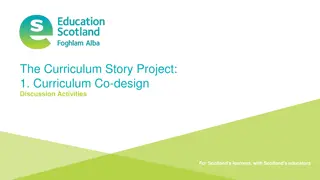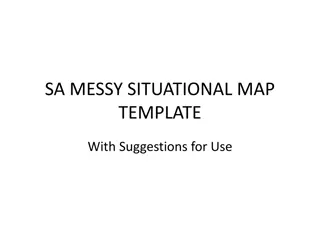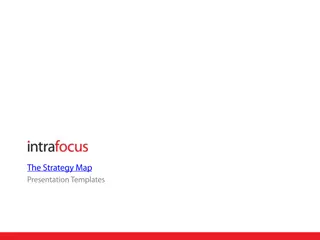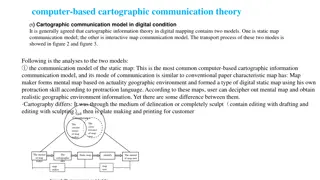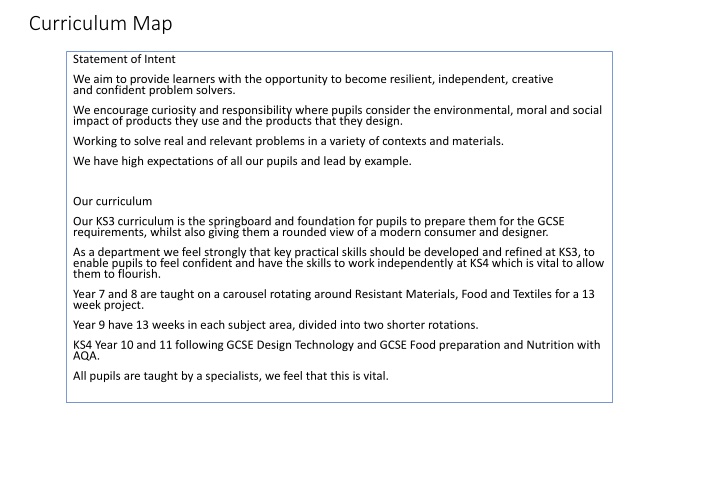
Innovative Design and Technology Curriculum Fostering Resilient Problem Solvers
Our curriculum empowers learners to be resilient, creative problem solvers by exploring key concepts in areas like Resistant Materials, Textiles, and Food. Through practical skills development and real-world problem-solving, students build confidence and independence for future success.
Download Presentation

Please find below an Image/Link to download the presentation.
The content on the website is provided AS IS for your information and personal use only. It may not be sold, licensed, or shared on other websites without obtaining consent from the author. If you encounter any issues during the download, it is possible that the publisher has removed the file from their server.
You are allowed to download the files provided on this website for personal or commercial use, subject to the condition that they are used lawfully. All files are the property of their respective owners.
The content on the website is provided AS IS for your information and personal use only. It may not be sold, licensed, or shared on other websites without obtaining consent from the author.
E N D
Presentation Transcript
Curriculum Map Statement of Intent We aim to provide learners with the opportunity to become resilient, independent, creative and confident problem solvers. We encourage curiosity and responsibility where pupils consider the environmental, moral and social impact of products they use and the products that they design. Working to solve real and relevant problems in a variety of contexts and materials. We have high expectations of all our pupils and lead by example. Our curriculum Our KS3 curriculum is the springboard and foundation for pupils to prepare them for the GCSE requirements, whilst also giving them a rounded view of a modern consumer and designer. As a department we feel strongly that key practical skills should be developed and refined at KS3, to enable pupils to feel confident and have the skills to work independently at KS4 which is vital to allow them to flourish. Year 7 and 8 are taught on a carousel rotating around Resistant Materials, Food and Textiles for a 13 week project. Year 9 have 13 weeks in each subject area, divided into two shorter rotations. KS4 Year 10 and 11 following GCSE Design Technology and GCSE Food preparation and Nutrition with AQA. All pupils are taught by a specialists, we feel that this is vital.
Key concepts Resistant Materials and Textiles Food 1. Identify and investigate 1.Food, nutrition and health 2. Designing and development 2. Food Science 3. Realisation 3. Food Safety 4. Analyse and evaluate 4. Food choice 5. Knowledge and understanding of technical principles 5. Food provenance Food Preparation and cooking techniques
Rotation 1 13 weeks Rotation 2 13 weeks Rotation 3 13 weeks Key themes covered Key themes covered Key themes covered 3. Textiles Health and safety of key equipment, research and investigation of a brief, designing, use of key equipment Sewing machine and iron, creating a paper pattern, introduction to techniques - Tie-dye, applique and Trapunto. Pupils design and create a 3.D monster learning to use the Equipment and processes. Introduction to fibres and fabrics where do fabrics come from? 7 1. Resistant materials Health and safety, Research, designing and manufacturing. Timber based product Man made boards and natural woods and their impact on the environment. 2. Food Technology Health and safety, Knife skills, Weighing and measuring, following a method, creaming method, rubbing in method, Bread making, blending. Introduction to Eatwell Guide. Introduction to sensory analysis. Key assessments Product Analysis, Design Ideas and final product Key Assessments Eatwell guide evaluation, scone practical, end of rotation assessment Key Assessments Design development, sewing machine test sheet and final product. 8 Key themes covered 1. Resistant materials Research into types of CAD/CAM. Exploring and using at least two types of CAD/CAM ( laser cutting, sublimation printing) within the production of a money box. Learning making and finishing process for plastics. Paper and board, 3D packaging. Evaluating a project in depth. Learning about different types of plastics and how they are sourced. Key themes covered 2. Food Understanding how bacteria grow and how to preserve food Healthy Eating- understanding the key macro and micro nutrients Understanding the effects on cooking using starches and aeration techniques Evaluating energy balance Looking at dietary needs through life Understanding fair trade Key themes covered 3. Textiles Decorative technique project. Introduction to silk painting, Reverse applique, and heat transfer. Creativity in design, how to create a repeat pattern, how this is done in industry screen printing. Fabric Construction Knitting, weaving and bonding. Blending and mixing. Key assessments Design ideas. Successful inputting of CAD which then results in a working product. Accurate recording of new processes. Key Assessments Comparison of chicken nuggets Swiss roll practical assessment Assessment of nutrient and functions of ingredients knowledge Key Assessments Peer assessment of inspirational mood board, technique step-by-step sheet, practical technique assessment.
Rotation 1 Rotation 2 Rotation 3 Rotation 4 Rotation 5 Rotation 6 Key themes covered Key themes covered Key themes covered Key themes covered Key themes covered Key themes covered Year 9 1. Resistant Materials 2. Food Technology 3. Textiles Designing to specification criteria. Environmental issues and recycling. Designing with sustainability or the environment in mind. Independent selection/recall of techniques previously learnt to encourage iterative design. Use of CAD/CAM where appropriate. Evaluation of product. 4. Resistant Materials Investigating and researching the work of a designer. Designing a product inspired by the work of a chosen designer with clear and obvious links. Stock forms and environmental impact of sourcing raw materials. Drawing techniques, including isometric, perspective and orthographic. 5. Food Technology Multi Cultural Project Evaluation of food from around the world including culture, food, traditions, diets/ dietary requirements. Plan and prepare 4 dishes from the around the world, showing a range of skills. NEA2 project to produce 2 products in 90 minutes. 6. Textiles Multi Cultural Project. Taking inspiration form the work of others/other cultures Introduction to Batik, couching and machine embroidery (More able pupils). Producing a wall- hanging using batik based on their chosen culture. Designing for a specific client, creating a client profile. Pupils plan Batik layering. Research into ways of hanging the product. Introduction to Fairtrade and Fairtrade principles. Moral and social issues relation to the textiles industry. Key joining methods for woods and plastics. Encouraging varied designs based on individual themes. Working to designs constraints and specification requirements set by a manufacturer. Developing independence in the planning and production of their final products. Hygiene and the law How we make food choices to include vegetarianism Evaluation of different pastries by tasting and then making a product with shortcrust, choux and puff pastry Decorating techniques using the Tunnock's Teacake Challenge organised by the Food Teachers Centre Key Assessments Producing a range of design ideas that are varied and make good use of the research that has been gathered. Completion of a final working and well made product that fully meets all of the design specification requirements. Key Assessments Evaluation of a dish Practical assessment of apple pie Key Assessments Use of recycling/ consideration of sustainability. Designing and final product quality of finish. Evaluation. Key Assessments Clear and obvious links to the designers work. Successful manufacturing of product. Clear and accurate drawings. Key Assessments Evaluations Quality of outcome Range of skills, understanding of culture, nutritional analysis. Key Assessments Client profile Fairtrade questions and mind map Quality of final product.
1 2 3 4 5 6 Key themes covered Textiles Fashion project - Introduction to pattern cutting using and adapting paper patterns for clothing. Introduction to influential designers - research and designing based on inspiration from a designer influence. Research including product analysis and designer research. Design development skills Presentation skills. Key themes covered Completion of fashion project Production of final fashion prototype. Including How to create shape in fabric Darts, pleats, gathers. How to insert a zip or button fastening. Evaluation in terms of design inspiration and functionality of product. Topic Fabrics Including Fibres and their origins, advantages and disadvantages. Methods of construction uses, advantages/disadvan tages. Stock forms/ types/ sizes. Environmental/social impact Key themes covered Key themes covered Key themes covered Key themes covered Year 10 Design Technology Topic *Smart Materials, technical textiles and composite materials. *Printing and finishing techniques. *Industrial Manufacture Methods of Production, JIT, Lean manufacture, CIM, Robotics and CAD/CAM. *Modern and smart materials. Practice NEA project. How to analyse a context. Client profiling and interviews, Writing a design brief and specification Developing iterative design - Design development and modelling. Completion of practice NEA Production of final prototype Testing and evaluation Preparation for year 10 Exam Focused revision. NEA begins AQA release contexts on 1st June. Section A Choosing and analysis of context Identification of problem and further analysis Research Client profile and profiling. Product analysis. Additional research led by the choice of problem pupil led. Review of research. Textiles Review of the year 10 exam, reflecting on areas to improve in year 11. Key Assessments Key Assessments Final assessment of fashion project including evaluation. Key Assessments Key Assessments Key Assessments Key Assessments Assessment of section 1 and 2 of the practice NEA. Whole project assessed. First assessment Iconic Designer research, product analysis Design Development, designing for a specific client. End of unit test on topics learnt. Whole project assessment. Year 10 examination. Assessment of section A Research and investigation. Mid topic test Methods of production and Fibres and Fabrics t.
1 2 3 4 5 Continuation of NEA Section B Writing of the design brief and detailed specification Based on conclusions from their investigations students will outline design possibilities by producing a design brief and design specification. Section C Generating design ideas Students should explore a range of possible ideas linking to the contextual challenge selected. These design ideas should demonstrate flair and originality and students are encouraged to take risks with their designs. Students are encouraged to be imaginative in their approach by experimenting with different ideas and possibilities that avoid design fixation. Section D Developing design ideas Students will develop and refine design ideas, through modelling and experimentation. This may include, formal and informal 2D/3D drawing including CAD. Continuation of NEA Completion of section D Students will develop at least one model, through trialling of processes and techniques Students will also carry out additional research and select suitable materials and components. Continuation of NEA Section F Analysing and Evaluating Testing of product, modifications and final evaluations of the product. Organising and evidencing of the whole project for submission. Topic Forces and stresses Tension, compression, bending, torsion and shear. Key themes covered Year 11 Design Technology Focused revision Revision sessions of topics covered Core technical principals Specialist technical principals Maths revision- Calculation of quantities of materials, costs and sizes. Scaling drawings, analysing responses to user questionnaires. Calculate surface area and volume. Measurement and marking out, creating tessellated patterns. Calculate areas of triangles and rectangles, surface areas and volumes of cubes. Final exam Textiles Section E Realising design ideas Students will work with a range of appropriate materials/components to produce prototypes that are accurate and answer the design brief and problem as effectively as possible. Preparation for Mock examination Mock examination Topic - Energy generation and storage Fossil fuels, Nuclear power, renewable energy and energy storage systems. Topic Mechanical Devices Different types of movement Changing magnitude and force Levers Practice tests Identification of gaps or areas to focus individual revision Exam technique Additional work on Designing and making principles Communication of design Investigating the work of others Product analysis techniques, areas to focus on. Key Assessments Key Assessments Key Assessments Key Assessments Key Assessments Each section is assessed and marks given along with feedback in line with AQA guidance. Final marking and grading of the NEA End of topic tests Mock examination marking and review Assessment of practice tests GCSE Exam paper
1 2 3 4 5 6 Key themes covered Resistant materials Key themes covered Resistant materials Completion of pizza cutter project. Key themes covered Resistant materials Key storage project- Development and modelling of their design, leading to a final design idea. Practical modelling, advantages and disadvantages. Introduction into metals, correct tools use and manufacturing skills, including forging, brazing, pewter casting and dip coating. Quality control of metal elements. Stock forms of metals, environmental impacts of using metals, properties and uses. Sustainability and the long term impact of manufacturing our designs . Key themes covered Resistant materials Completion of key storage project- Manufacturing of final design to include wood joints, brazed and dip coated steel hook and pewter cast key ring. Exploring different types of manufacturing processes and production lines- mass, batch, JIT etc. Finishing processes of various materials and evaluation of final product-focus being on links to specification and design brief. Key themes covered Resistant materials Key themes covered Year 10 Design Technology NEA begins AQA release contexts on 1st June. Section A Choosing and analysis of context Identification of problem and further analysis Research Client profile and profiling. Product analysis. Additional research led by the choice of problem pupil led. Review of research. Ergonomics project- pizza cutter. Introduction to ergonomics and anthropometrics. Focus being on the application of gathered anthropometric data to relevant designs. Independently writing a brief and specification. Using the work of Alessi to inspire creative and iterative designs. Extensive modelling and feedback with client. Use of CAD modelling and manufacturing. Theory unit- Crowd funding, fair trade and virtual marketing. Exploring ergonomics and anthropometrics further by adapting design for different social groups/target markets. Resistant Materials Market pull/technology push. Mini mobile phone design project and product analysis. Manufacture of final product. Considering the packaging- paper and board. Math links of working out area and volume. Planned obsolescence, design for maintenance. Levers and cranks mini experiments. Material properties- most suitable for the task proposed. Modification of properties. Communication of design techniques. Developing and refining skills for pizza project. . Key Assessments The successful manufacturing of final design to include wood joints, brazed and dip coated steel hook and pewter cast key ring. Links must be clear to iconic design. Key Assessments Assessment of sections of the practise NEA pizza cutter ergonomics project. Key Assessments Assessment of final product and over all project. Key Assessments A well formed and finished pewter cast key ring, which potentially incorporates and acrylic insert or a raised casting. A working hook Key Assessments End of term test on topics, homework tasks set based on theory. Year 10 tests. Key Assessments Assessment of section A Research and investigation.
1 2 3 4 5 Continuation of NEA Section B Writing of the design brief and detailed specification Based on conclusions from their investigations students will outline design possibilities by producing a design brief and design specification. Section C Generating design ideas Students should explore a range of possible ideas linking to the contextual challenge selected. These design ideas should demonstrate flair and originality and students are encouraged to take risks with their designs. Students are encouraged to be imaginative in their approach by experimenting with different ideas and possibilities that avoid design fixation. Section D Developing design ideas Students will develop and refine design ideas, through modelling and experimentation. This may include, formal and informal 2D/3D drawing including CAD Continuation of NEA Completion of section D Students will develop at least one model, through trialling of processes and techniques Students will also carry out additional research and select suitable materials and components. Continuation of NEA Section F Analysing and Evaluating Testing of product, modifications and final evaluations of the product. Organising and evidencing of the whole project for submission. Key themes covered Key themes covered Year 11 Design Technology Maths revision- Calculation of quantities of materials, costs and sizes. Scaling drawings, analysing responses to user questionnaires. Calculate surface area and volume. Measurement and marking out, creating tessellated patterns. Calculate areas of triangles and rectangles, surface areas and volumes of cubes. Focused revision RM focus Final exam Section E Realising design ideas Students will work with a range of appropriate materials/components to produce prototypes that are accurate and answer the design brief and problem as effectively as possible. Preparation for Mock examination Mock examination Revisit key terms- Ergonomics Anthropometrics Environmental impact of designing and manufacturing ( 6rs, ecological and social footprint) Practice tests Identification of gaps or areas to focus individual revision Exam technique Additional work on Designing and making principles Communication of design Investigating the work of others Product analysis techniques, areas to focus on. Renewable energy. Modern materials Smart materials Forces and stresses- mini bridge experiment. Key Assessments Key Assessments Key Assessments Key Assessments Key Assessments Assessment of practice tests with feedback Constant verbal feedback throughout Each section is assessed and marks given along with feedback in line with AQA guidance is given. Final marking and grading of the NEA End of topic tests Mock examination marking and review GCSE Examination
1 2 3 4 5 6 Key themes covered Food, nutrition and health: knowledge and unders tanding of Micro/Macro Fat/water soluble Fibre HBV/LBV Protein Complex/ simple CHO The nutritional needs and h ealth and making informed choic es for a varied and balanced diet Dietary diseases Portioning a chicken Knowledge of pastry Making pasta Key themes covered Heat transfer and why we cook food The functions of ingredients in cooking starch, protein, gluten, raising agents, browning and emulsions Key themes covered Food safety and hygiene Food labelling Food from around the world Sensory analysis Key themes covered Key themes covered Key themes covered Year 10 Food preparation and nutrition NEA1 practice Evaluate and research an NEA1 subject Complete research, hypothesis, investigations, evaluations. Practice NEA2 Completing research Preparing for technical dishes and final dishes Practice NEA2 Complete 2 technical dishes, evaluating presentation techniques, writing a time plan for 2 dishes in 90 minutes, evaluating final dishes. BBQ food Gelatine desserts Key Assessments Key Assessments Key Assessments Key Assessments Key Assessments Key Assessments Practical assessment Evaluation of technical dishes and final dishes End of topic tests in nutrition Practical assessment End of topic test in functions of ingredients Practical assessment Food hygiene test (Level 2) Evaluation of sensory evaluation NEA1 report Year 10 exam Research section of NEA2
1 2 3 4 5 Key themes covered Food investigation task ( Nea 1) Students will investigate the working characteristics and the functional and chemical properties of a particular ingredient through practical investigation. They will produce a report which will include research into 'how ingredients work and why'. Key themes covered Key themes covered Key themes covered Key themes covered Year 11 Food preparation and nutrition NEA1 Completion Nea 2 Students will prepare, cook and present a final menu of three dishes to meet the needs of a specific context. They will then produce their final menu within a single period of no more than 3 hours, planning in advance how this will be achieved. Revision The following will be covered in this period: how the written exam is organised how to prepare for the written exam the command words used in written exam the types of questions that will be asked in a written exam including: multiple choice data response structured question open- ended response questions or free response questions GCSE Examinations start. NEA2 Research and complete the technical dishes to showcase their skills Key Assessments Key Assessments Key Assessments Key Assessments Key Assessments Revision topic exam question practice NEA1 portfolio Students produce a report of between 1,500 2,000 words (approx. 6 8 sides of A4 or A3 equivalent). Practical investigations are a compulsory element of this non-exam assessment. NEA2 portfolio Year 11 mock exam

